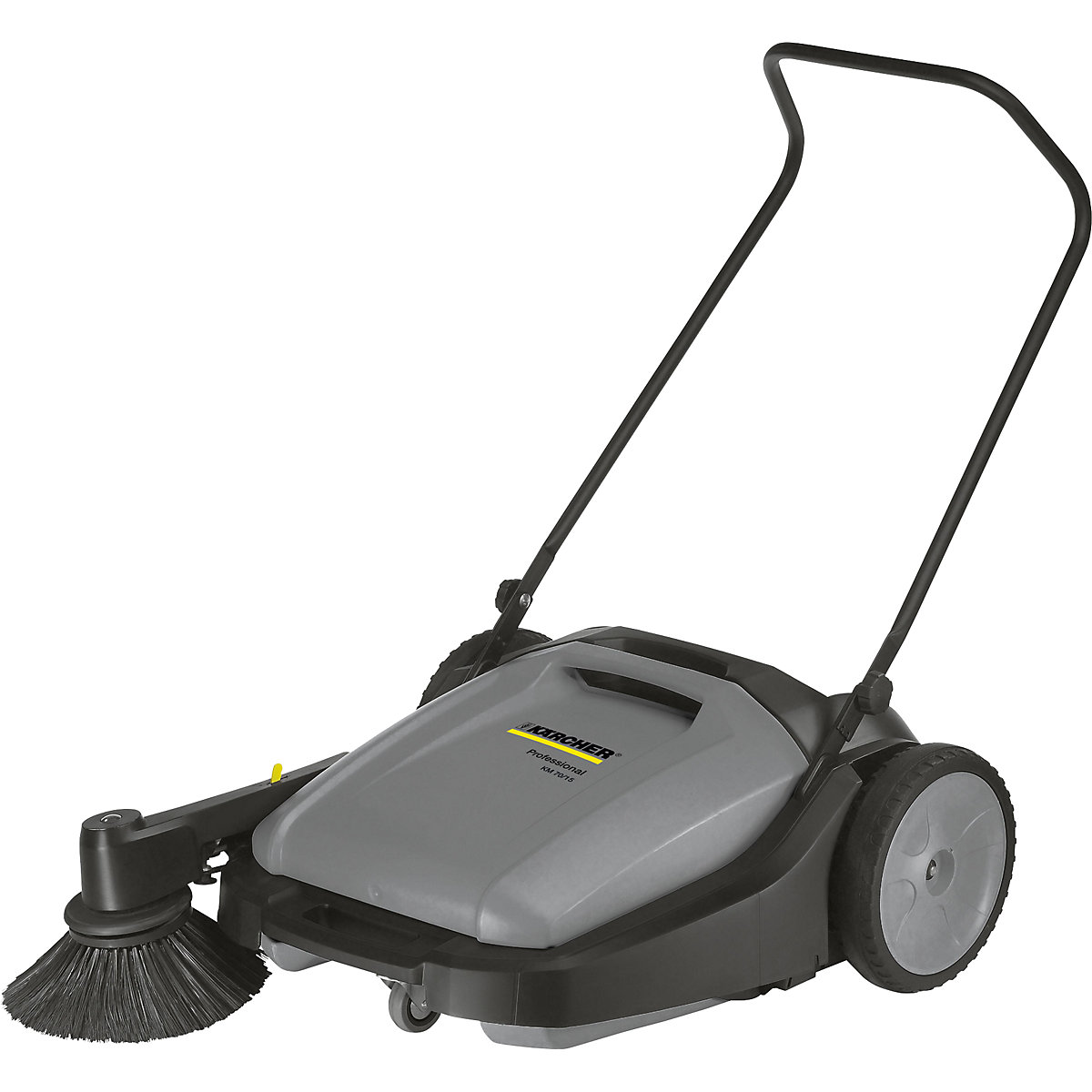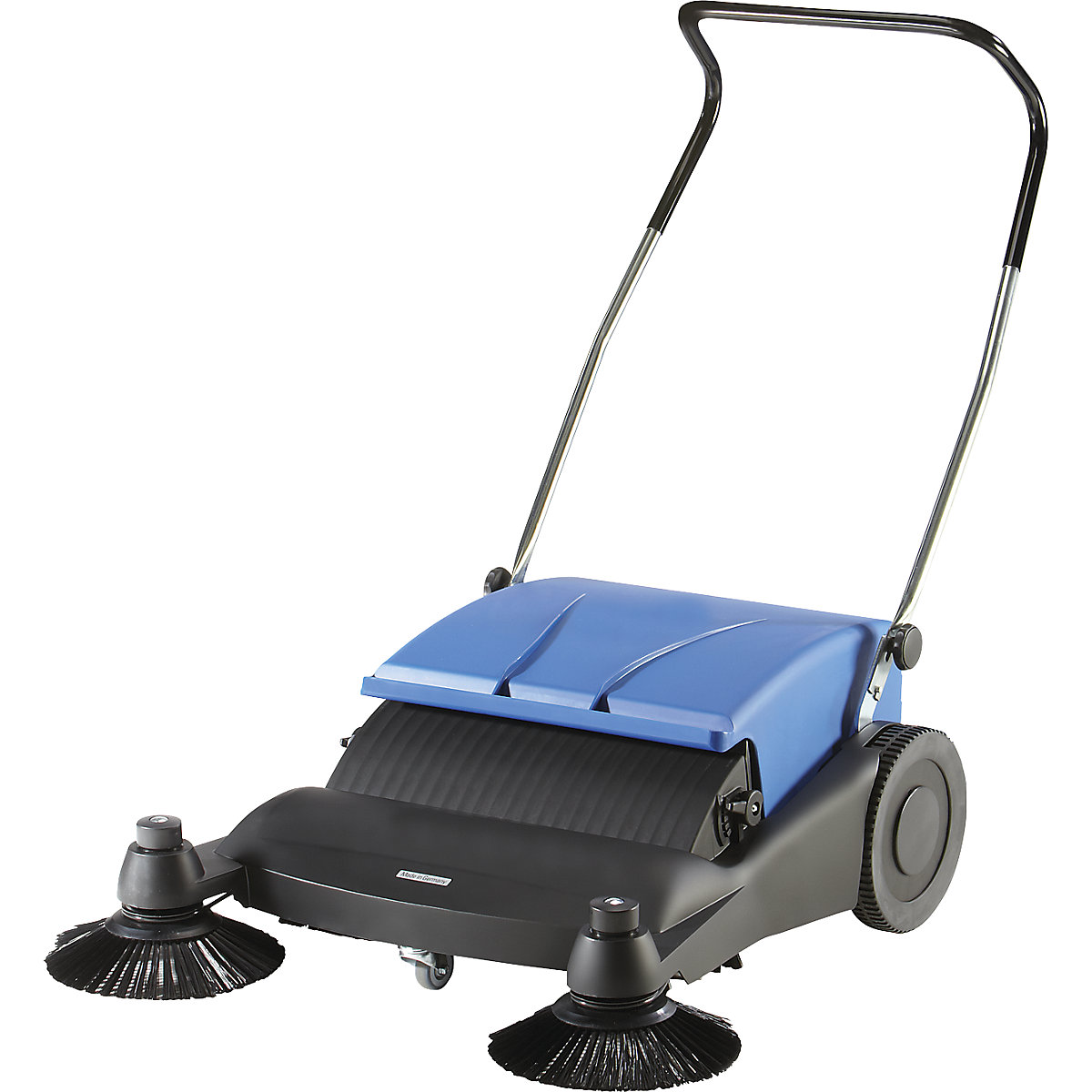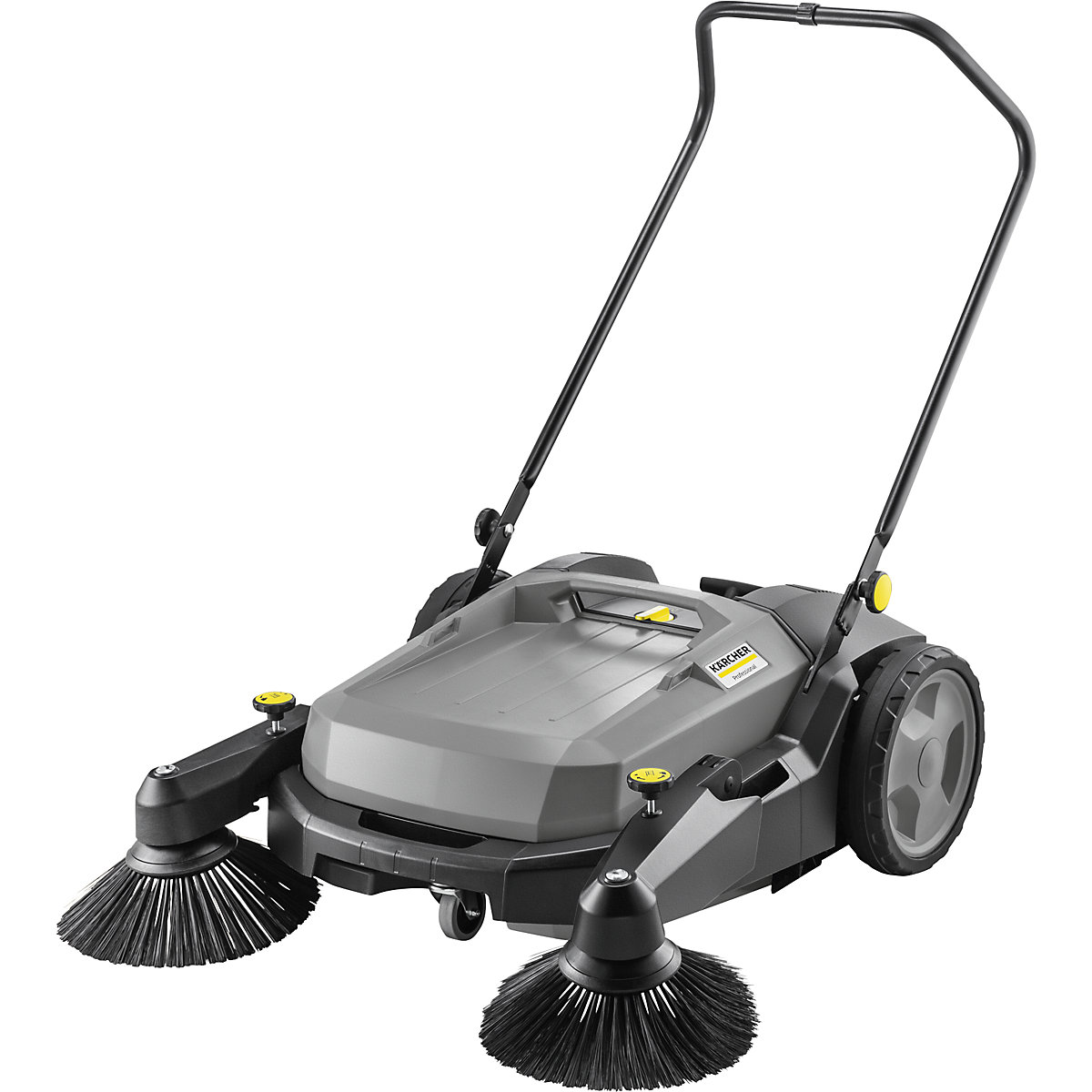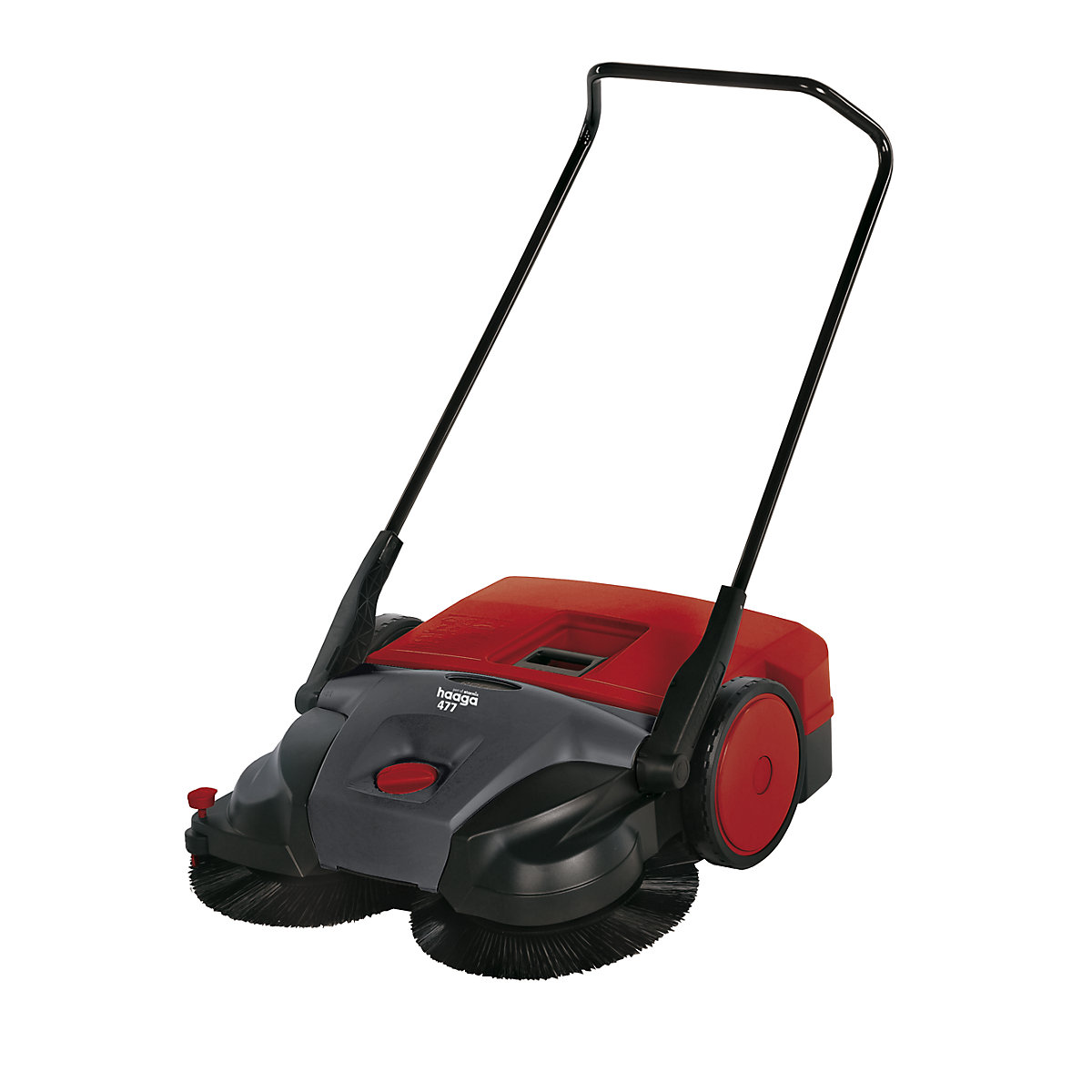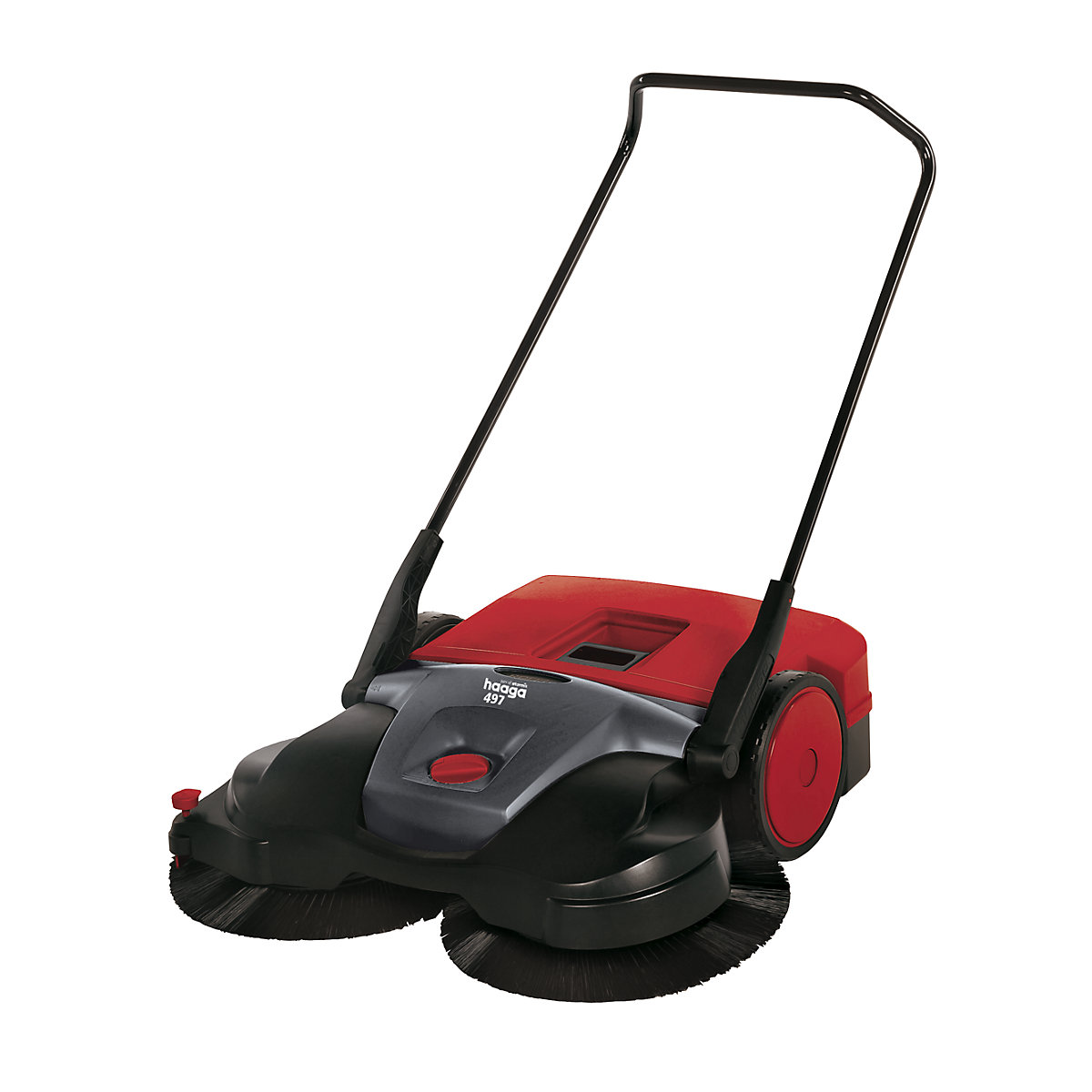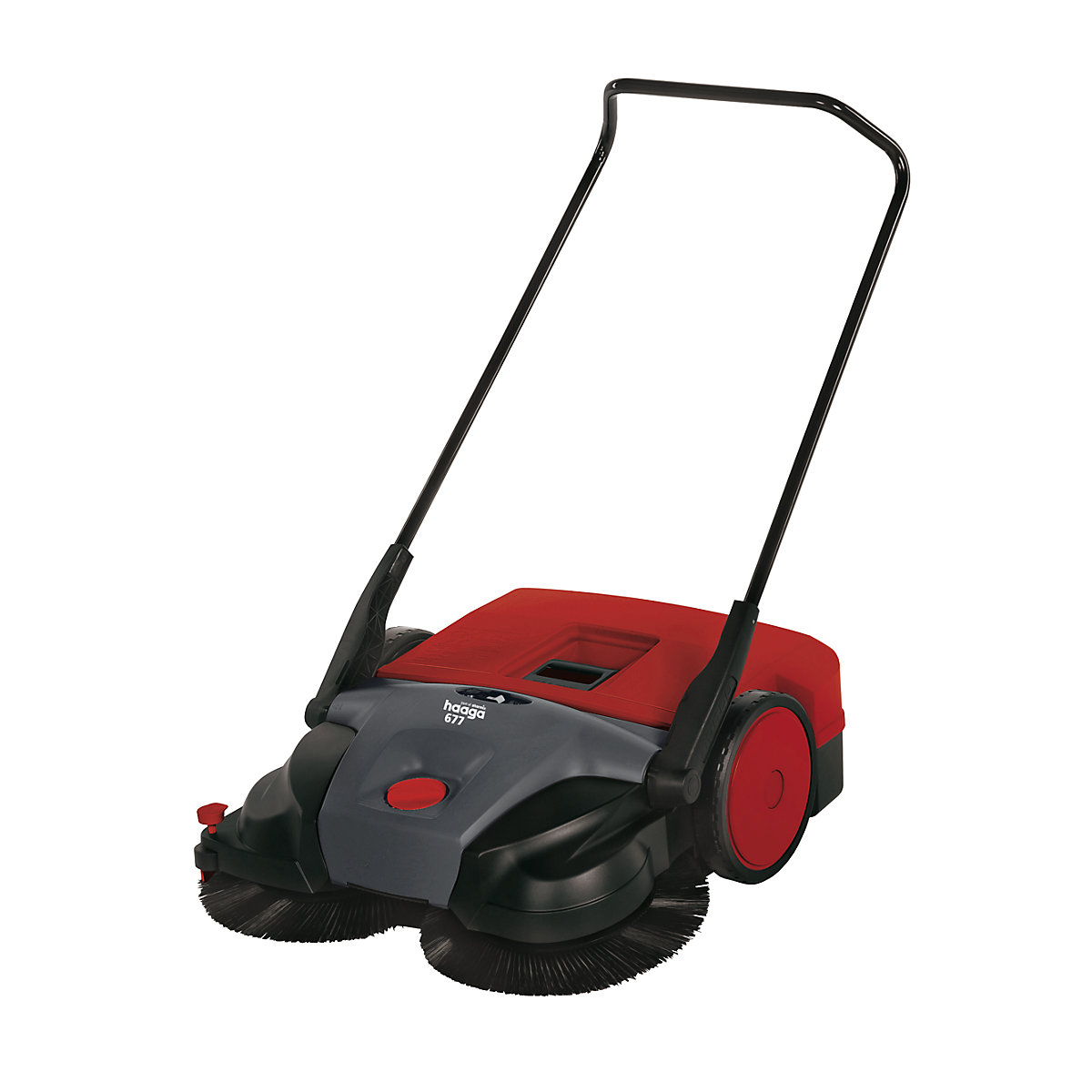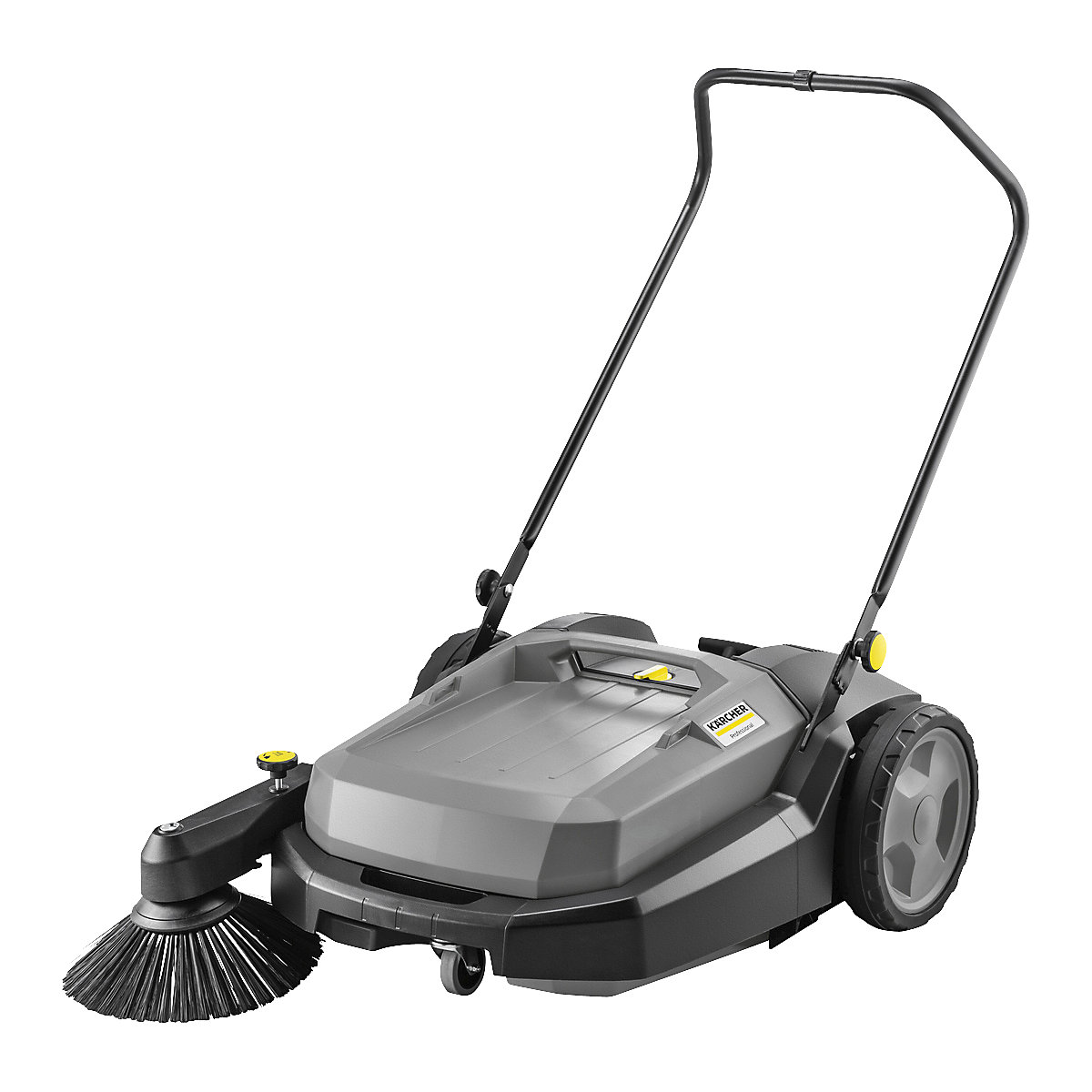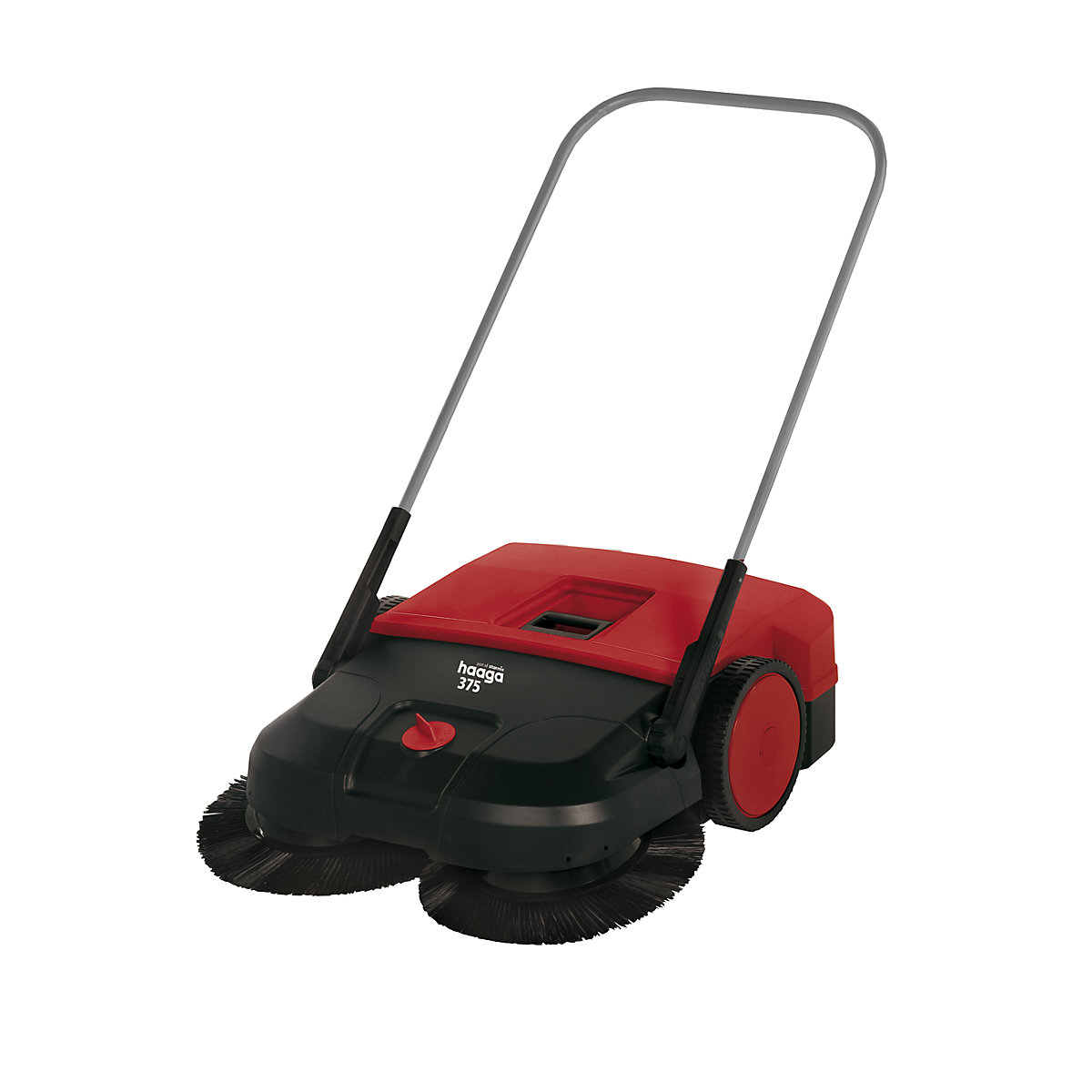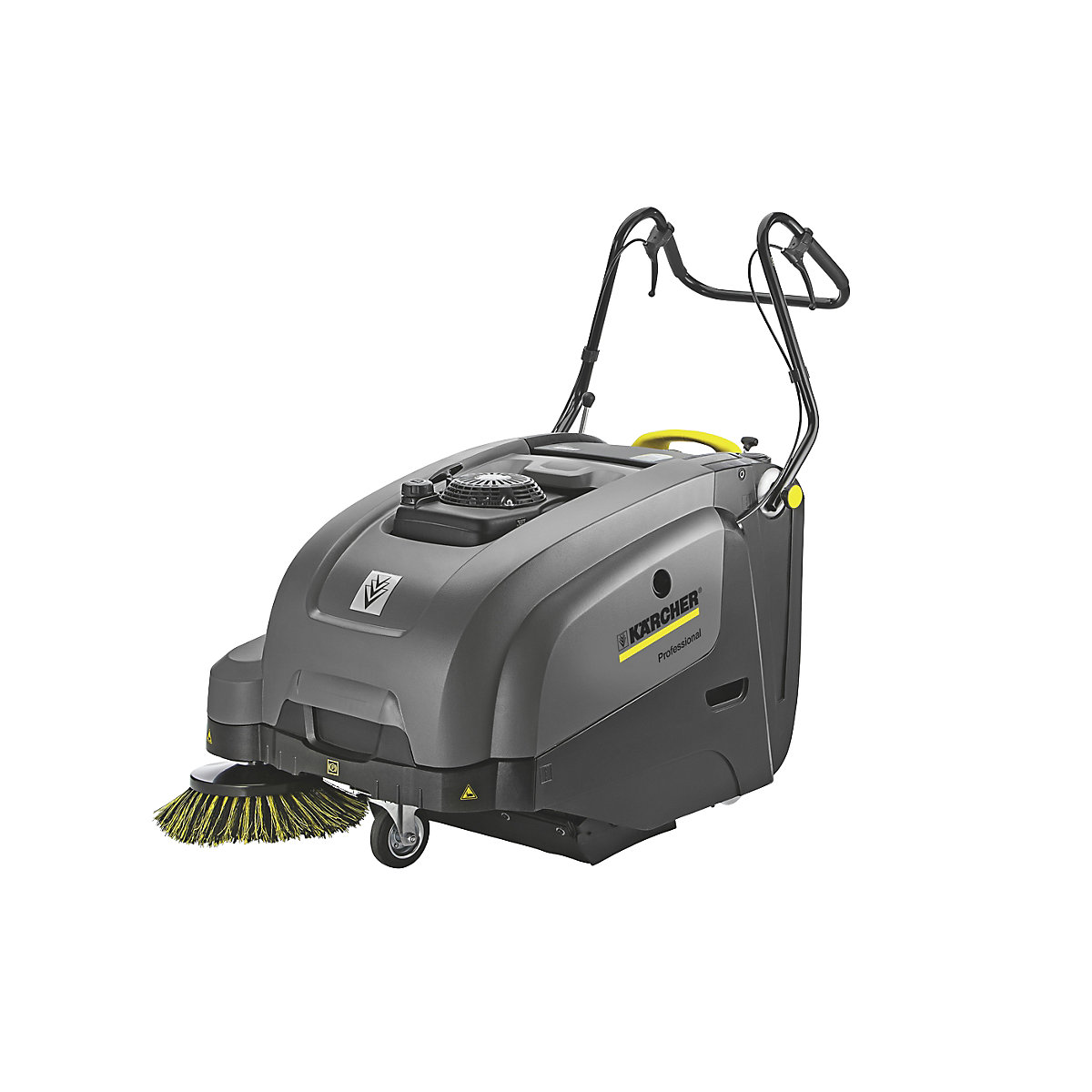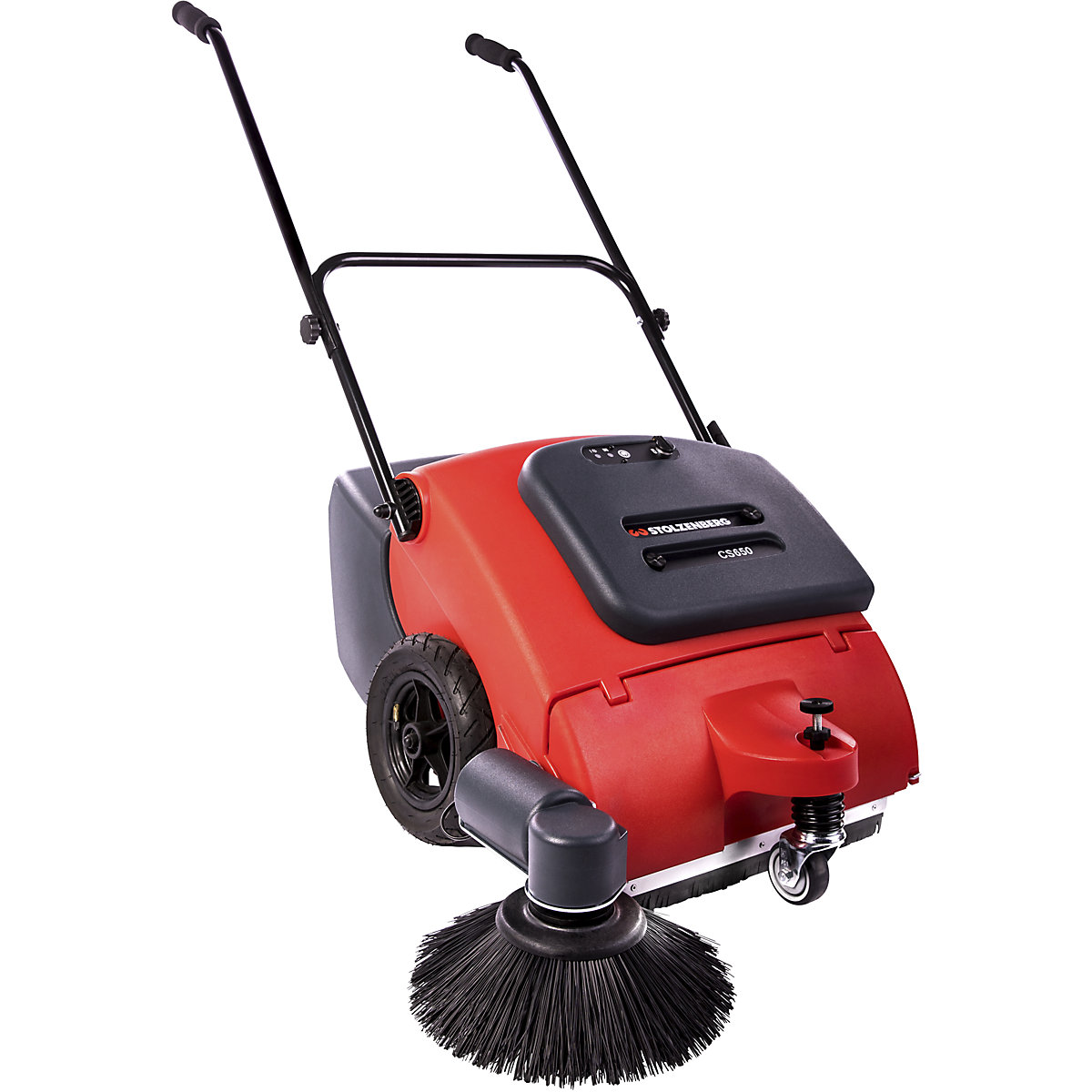Principles of sweepers and the tandem roller principle
The advantages of tandem rollers at a glance!
Three different sweeping principles are utilised nowadays:
Single-roller dustpan principle

Single-roller overthrow principle

Tandem-roller principle

Advantages of the tandem-roller principle:
This principle utilises two counter-rotating sweeping rollers. The front roller functions solely as a transport roller, and thus rotates in the air without making contact with the ground. As a result, there is very limited wear on this roller and it requires minimal power.
The refuse which has been passed over by the front brush is passed between the two rollers and transported upwards. The dirt which is transported upwards is guided backwards via a guide plate and then into the dirt container.
The two side brushes support the function carried out by the roller brushes by brushing the refuse out of corners and edges and in front of the roller brushes so that it can be fed into the dirt container.
By utilising this principle, all refuse which fits underneath the core of the roller brushes can be collected. Even in the case of manual sweepers, the flexibility of the brushes enables the collection of objects up to the size of a bottle, whereby fine dust and sand are also collected in the container. There can thus be no blockage caused by an otherwise forward-positioned dirt container.
The absence of a rubber lip on the machine enables lighter, more bulky objects, such as polystyrene and dry leaves, to be picked up by the front roller brush. The slight vacuum, which is created between the roller brushes, enables very problematic refuse, such as paper which is lying flat on the floor, to also be collected.
The dirt container is filled from the top to ensure optimum utilisation of collection capacity. A height adjustable sweeping roller ensures both that wear can be balanced, and that the effective reach of the sweeping roller is maintained over uneven surfaces.


